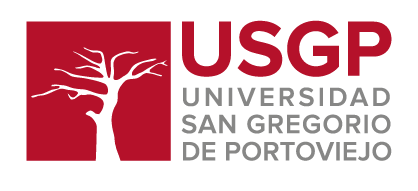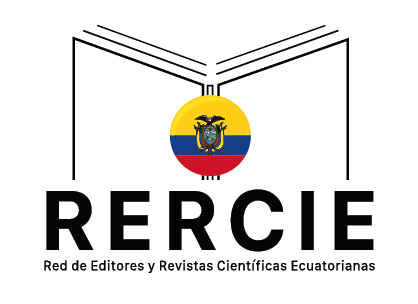Bilingual Education as Basis of Multiculturalism in Murad Ramzi’s Concept
DOI:
https://doi.org/10.36097/rsan.v1i30.899Palabras clave:
murad ramzi, multiculturalism, bilingual education, confessional schoolResumen
The article deals with the analysis of cultural heritage of Murad Ramzi, the Tatar scientist, theologian, and Sufi mentor. Nowadays the process of globalization has affected the sphere of education. Miscegenation and interpenetration of various cultures have made the concept of multiculturalism and bilingual education quite actual. The religious education of the Tatars at that time corresponded to that concept. Murad Ramzi was one active supporters of bilingual education. His works discussed the issues of building the multicultural environment in the Volga–Urals region of Russia. Their analysis is of great importance for understanding the genesis of Tatar theology.
Citas
ABDULSAIT AIKUT. (2016). Muhammad Murad Ramzi (1855–1935) and his Works. Crimean Historical Review. No 2. P. 13.
AHMET OZEL. (2007). Remzi, Muhammed Murad. Ankara: Turkiye Diyanet Vakfı (TDV) İslam Ansiklopedisi. Vol. 34, P. 567-568.
Metsämuuronen, J. (2018). Common Framework for Mathematics – Discussions of Possibilities to Develop a Set of General Standards for Assessing Proficiency in Mathematics. International Electronic Journal of Mathematics Education, 13(2), 13-39.
AKHMADULLIN, S.Z. (2018). Talfiq al-Akhbar... by Murad Ramzi as a Source of the History of Bashkirs. Thesis for the degree of historical sciences candidate. Moscow, P. 48.
BALITSKAYA, I.V. (2009). Multicultural Education in the USA, Canada and Australia. Abstract of dissertation for the degree of Doctor of Pedagogical Sciences.Moscow.
Educational Standards of Secondary Professional Muslim Education. (2014). Kazan: CRO - MRB RT. P. 108.
GABBAS AL-GHAZAWI AL-MUKHAMI. (2017). Mausuga tariqh al-Hyrak baina al-ihtilyalyain. Ad-dar al-harabia lil-mausugad. Vol.1. Pp. 55-59. Electronic resource / URL: https://books.rafed.net/view.php?type=c_fbook&b_id=1919&page=220 (date of access: 16.10.2017).
HAMID, S.M. (2014). Haniya al-Crym munzu bidaya al-hukm al-Gusmani hatta cuba al-ihtilyal ar-Rusi dirasa tarihiya wa al-hadariya [The Crimean Khanate from the Beginning of the Ottomans’ Reign to Russia’s Conquest: Historical and Cultural Research]. P. 13.
KHASAWNEH, A.A. (2013). Agiographic Works by Murad Ramzi “Jewels of Good Deeds”. Bulletin of Kazan State University of Culture and Arts. No 1. Pp. 54–59.
MALYKH, L.M. (2015). From the Experience of Multilingual Education in Russia (on the Example of Secondary and Higher Education). Multilingualism in the Educational Environment. No 7. P. 53. Izhevsk: Publishing Center: “Udmurt University”.
MINIAKHMETOV, R.R. (2016). Tolerance in the Islamic Education System (mosque-based schools and madrasahs). Socio-economic and Technical systems: Research, Design, Optimization. No 6 (73). Pp. 74-84.
MUHAMMAD MURAD RAMZI. (2002). Muharrab al-Maktubat. Istanbul: Ihlas Vakfı, 2002, Vol. 3. P. 301-308. Turkey.
MURAD MUHAMMAD. (2008). Rashahat gain al-hayat. Beirut: Dar al-kutub al-guilmiya. Pp. 563-564. Electronic resource / URL: https://archive.org/details/racha7at/page/n5. (date of access: 15.10.2018).
MURAD RAMZI. (2017). Talfiq al-akhbar wa talkyh al-asar fi vakaig Kazan wa Bulgar wa muluk at-tatar / Ed., preface. commentary S.I. Khamidullin. Ufa: Bashkir state University; NBRB. Vol. 1. P. 600.
RAMZI, M. (2003). Talfiq al-akhbar wa talkyh al-asar fi vakaig Kazan wa Bulgar wa muluk at-tatar [The Messages and the Analysis of Legends about the Events of Kazan and the Bulgars and the Kings of the Tatars]. Beirut: Dar al-kutub al-ilmiya. Vol. 2. Pp. 276-312.
THE KORAN. (1990). Translated from Arabic by I. Y. Krachkovsky. M.: “Raritet”. P. 411. WULFSON, B.L. 2003. Comparative Pedagogics: History and Modern Problems. M.: Publishing House URAO. P. 166.
Descargas
Publicado
Cómo citar
Número
Sección
Licencia
 Esta obra está bajo una Licencia Creative Commons Atribución-NoComercial-SinDerivadas 4.0 Internacional (CC BY-NC-ND 4.0).
Esta obra está bajo una Licencia Creative Commons Atribución-NoComercial-SinDerivadas 4.0 Internacional (CC BY-NC-ND 4.0).
















